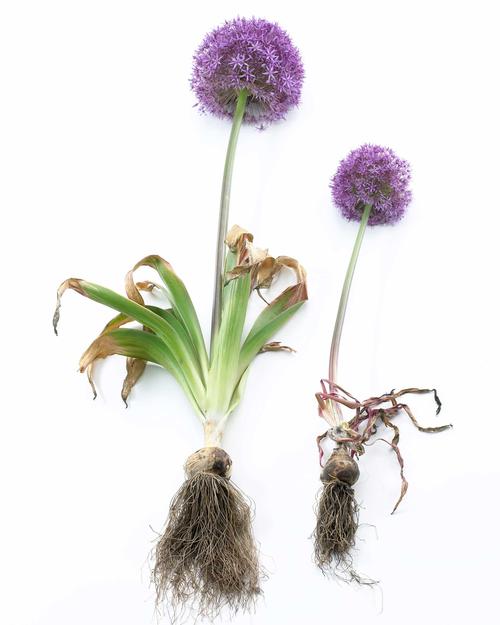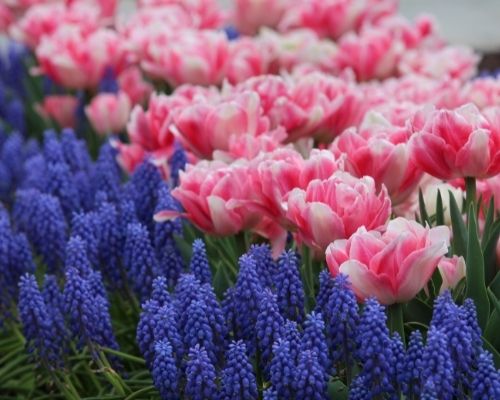Get Your Spring Garden Off to a Great Start
Quality counts, and is especially important when buying plants and bulbs for your garden. Learn how to recognize good quality bulbs and the differences between true bulbs, corms, rhizomes and tubers.
True Bulbs and Corms
Tulips, daffodils and alliums are "true bulbs." Inside the bulb is a basal plate with roots, layers of leaves, and one or more buds. True bulbs are measured in centimeters around the widest part of the bulb. Larger bulbs produce bigger flowers with stronger stems, so a 12cm tulip bulb will give you better results than an 10cm bulb.
Crocus and freesia grow from corms, which are similar to true bulbs, but contain stem tissue rather than leaves. As with true bulbs, corms are measured in circumference, and bigger corms produce the best flowers.

Rhizomes and Tubers
Rhizomes are enlarged stems that grow close to the soil surface. Bearded iris and cannas both grow from rhizomes. Like bulbs and corms, rhizomes contain stored food energy. Large, grade #1 rhizomes are heavier and have more growth points or "eyes" than #2 or #3 rhizomes.
Tubers are another type of enlarged stem. They are typically graded by weight, with #1 being the heaviest, best quality tuber.

Firmness
Flower bulbs should feel firm to the touch. This tells you they have been properly stored and are in good condition. It is normal for fall bulbs to show a little surface mold. This does not affect performance.
If you are purchasing bulbs in a retail store, press them gently to make sure they are firm and not mushy. Longfield Gardens ships high-quality, fall-planted flower bulbs at the proper planting time for your growing zone. Shop here for spring-blooming bulbs, including tulips, daffodils, hyacinths, crocus and others.

